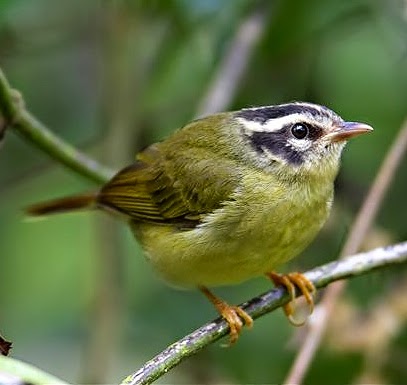 |
| Photo by R.S. Scanlon (Mango Verde) |
Common name:
three-striped warbler (en); pula-pula-de-cabeça-listada (pt); paruline triligne (fr); reinita cabecilistada (es); dreistreifen-waldsänger (de)
Taxonomy:
Order Passeriformes
Family Parulidae
Range:
This species is found in Costa Rica, Panama and northern Colombia and Venezuela, and along the Andes from western Colombia down to central Bolivia.
Size:
These birds are 13 cm long and weigh 10-13 g.
Habitat:
The three-striped warbler is found in mid-altitude, moist tropical forests, mainly at altitudes of 1.000-2.000 m, but ocasionally as low as 300 m and as high as 2.700 m.
Diet:
They feed mainly on arthropods, may possibly also take some vegetable mater.
Breeding:
Three-striped warblers breed in February-September. The nest is a small domed cup with a side entrance, usually placed on a steep slope or bank, or built into the leaf litter or under the base of a sapling or small trees. There the female lays 1-3 white eggs with brown spots, which she incubates alone for about 16 days. The chicks are fed by both parents and fledge 10-11 days after hatching.
Conservation:
IUCN status – LC (Least Concern)
This species has a large breeding range and is described as common. The population is suspected to be in decline owing to ongoing habitat destruction.







